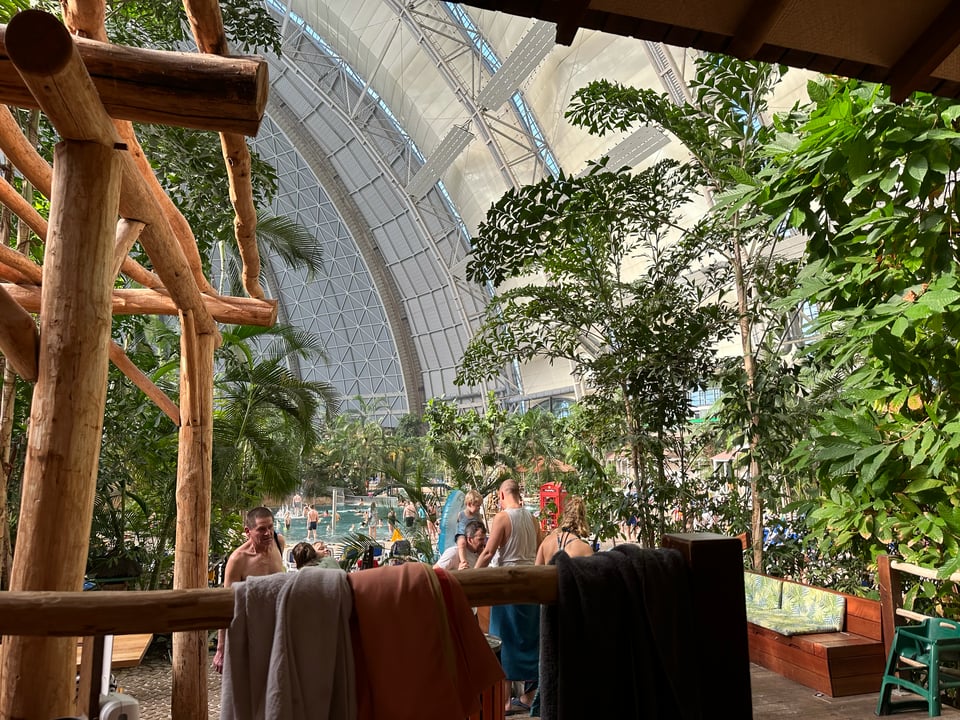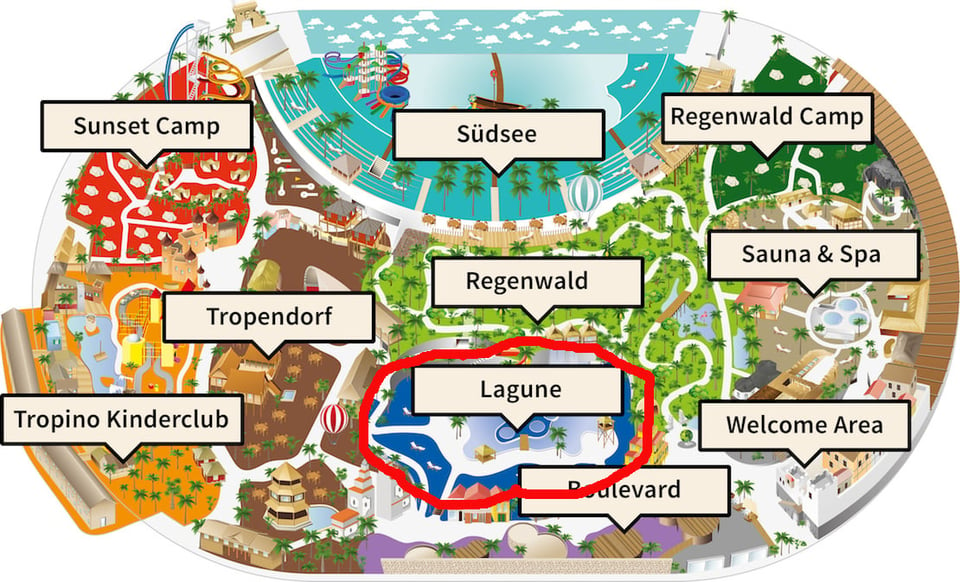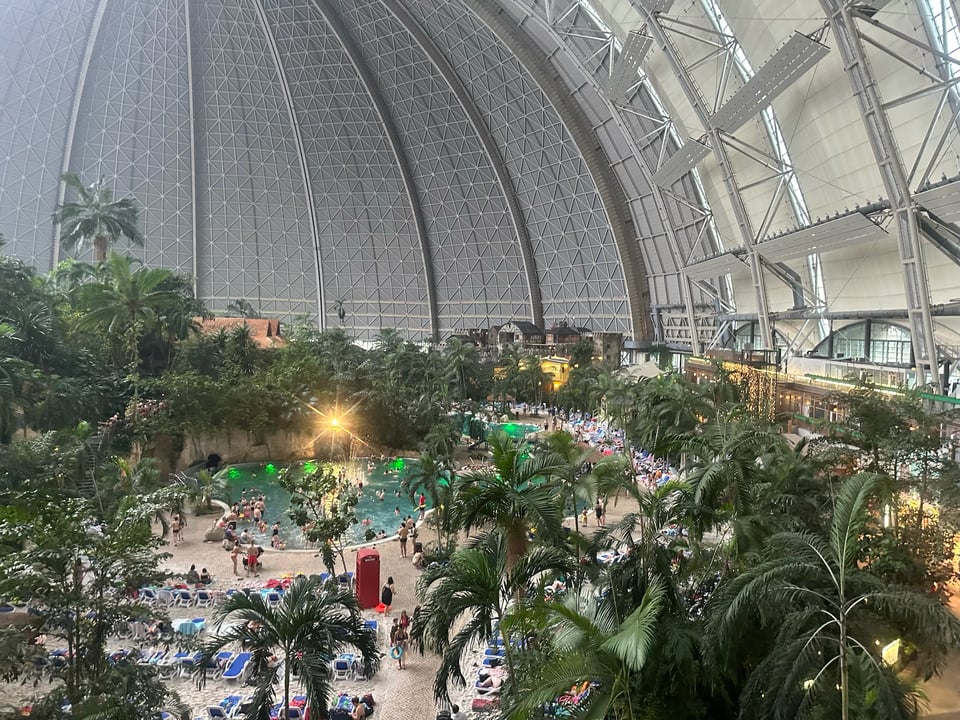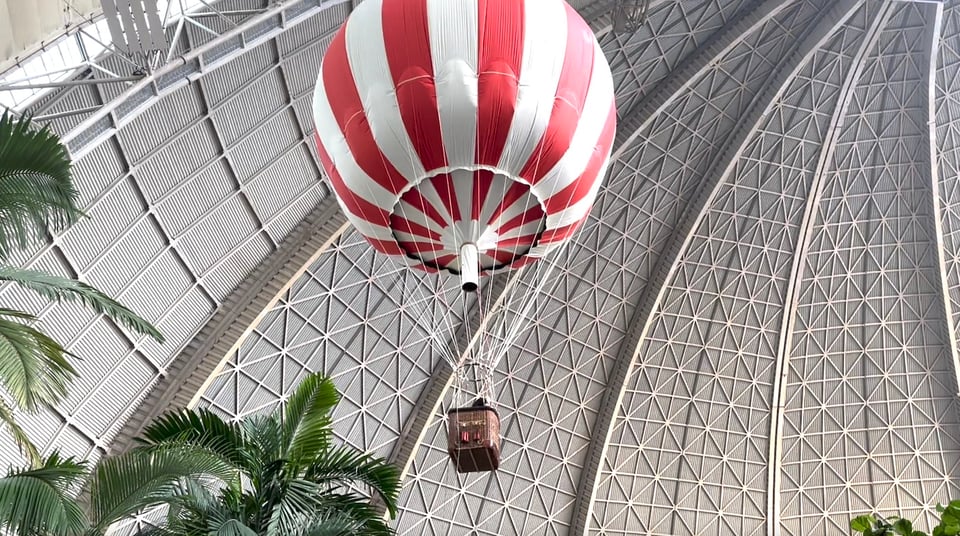What A Huge Indoor Waterpark Can Teach Us About Vision

When I was younger, my teachers taught me something I now recognise as a lie we tell to children, in this case that the reason we have depth perception and can see the world in three dimensions is because we have two eyes and, unlike herbivores, they're located on the front of our heads.
This learned "fact" is easily disproved by closing one eye and finding that the world you see remains in full, glorious 3D.
The truth is that you see the world in 3D because between the conscious you and your eyes is a sort of visualisation module that takes in the raw visual data from your eyes and constructs a three dimensional model for you. (Disclaimer: I'm a writer not an expert in this subject, so this entire post might qualify as merely a slightly more sophisticated lie for grown-ups).
Anyhow, to create that model, yes, it does use the parallax between your two front mounted eyes, adding in also the degree to which you focus on things to see them and the extent to which objects shift when you turn or move your head. But mostly it's creating the model based on its knowledge of the world.
Imagine your eyes are seeing a cow and a double-decker bus somewhere in the distance, and they're both visible as the same size. i.e. The cow's head is level with the top of the bus.

It is, to misquote Father Ted, a case of "this cow is small, that bus is far away". Our eyes don't have radar, or laser beams that bounce back off a target. We know how far away a bus or a cow is because we know how big they are, and thus our brain knows where to place them within the 3D model. Similarly, if we see an office or apartment block, we can estimate its size by how big the windows appear and how many rows of windows it has.
Of course, where this all breaks down is when your brain simply doesn't know how big something is and has no way of figuring it out. And that's where we come to my visit of the last weekend, to Tropical Islands Resort near Berlin, where they've built the world's largest indoor waterpark in a former airship hanger.
It's massive, like mind-bendingly huge, literally so, as I'm going to explain. The world's largest single hall without supporting pillars inside, it's 360 metres (1,180 feet) long, 210 metres (690 feet) wide and 107 metres (351 feet) high. To put that in perspective, that's nearly 25 double-decker buses high, tall enough to fit in a 35 storey apartment block. But there's nothing whatsoever to let your brain know that. So it guesses how big the dome is.
And it guesses far too small.
This really came home to me when I was sitting beside the Lagoon, one of the park's two swimming areas. You can't see the rest of the complex; there's a rock wall along the long side, and fringing palm trees at either end.

My brain was telling me that the Lagoon was filling most of the interior of the cylindrical dome. It was telling me that the far wall of the dome was just beyond the cliff. It was telling me that the left-hand end-cap was just beyond the left-hand fringing palm trees and that the right-hand end-cap was just beyond the right-hand fringing palm trees. Had I believed what I was seeing, I would have sworn that the fabric walls were just over there.
Except I didn't believe what I was seeing, because I'd walked around all the other stuff that's in there, and thus knew that my brain had cocked up, really badly. It didn't have a bloody clue, but like a bullshitting generative AI it was presenting me with a clear, detailed and precise three dimensional model that was utterly and completely wrong. It could tell how big the pool was because it had human beings to give it a scale. But the size of the dome? Not a Scooby.
How wrong was it? Well here's the map, with the area bound by the cliff and the palm trees adding on in red.

As you can see, it's no-one near filling most of the dome's interior. Basically, my brain was guessing the dome was maybe 30 or so metres in height, rather than than the actual 107, and on that basis coming up with a footprint for the dome that was just big enough to accommodate the Lagoon (as opposed to the actual value of way, way, way bigger than the Lagoon).
It's not until you take a ride across the park in a balloon that your brain can start to realise just how wrong it was (although it doesn't actually learn - it still screws up when you go back to the Lagoon).

And if you're saying, wait, what, balloon? Back up Jonny! What?
Yes, there's a helium filled ballon with a wicker basket hanging from it that allows three of you to take a ride across the park. There's no pilot - well there is, but he's below you harnessed to the ballon by a rope, physically dragging it along.

The funny thing is that when you first see the balloon it looks quite small, because of the phenomenon I've been discussing. It's not until you get right up to it that you realise it's actually quite big.
So anyway, that's how a former airship hanger turned waterpark can teach us just how hard our brains are working to help us navigate the world.
Oh, and one final thing.
If you stay in one of the chalets, which are set in their own area a little way away from the main park itself, see that the dome is only a few hundred metres away over there and think, "We might as well walk that"... It's actually over a mile away. I checked it on Google maps.
So if you're not up for a walk, take the shuttle bus.